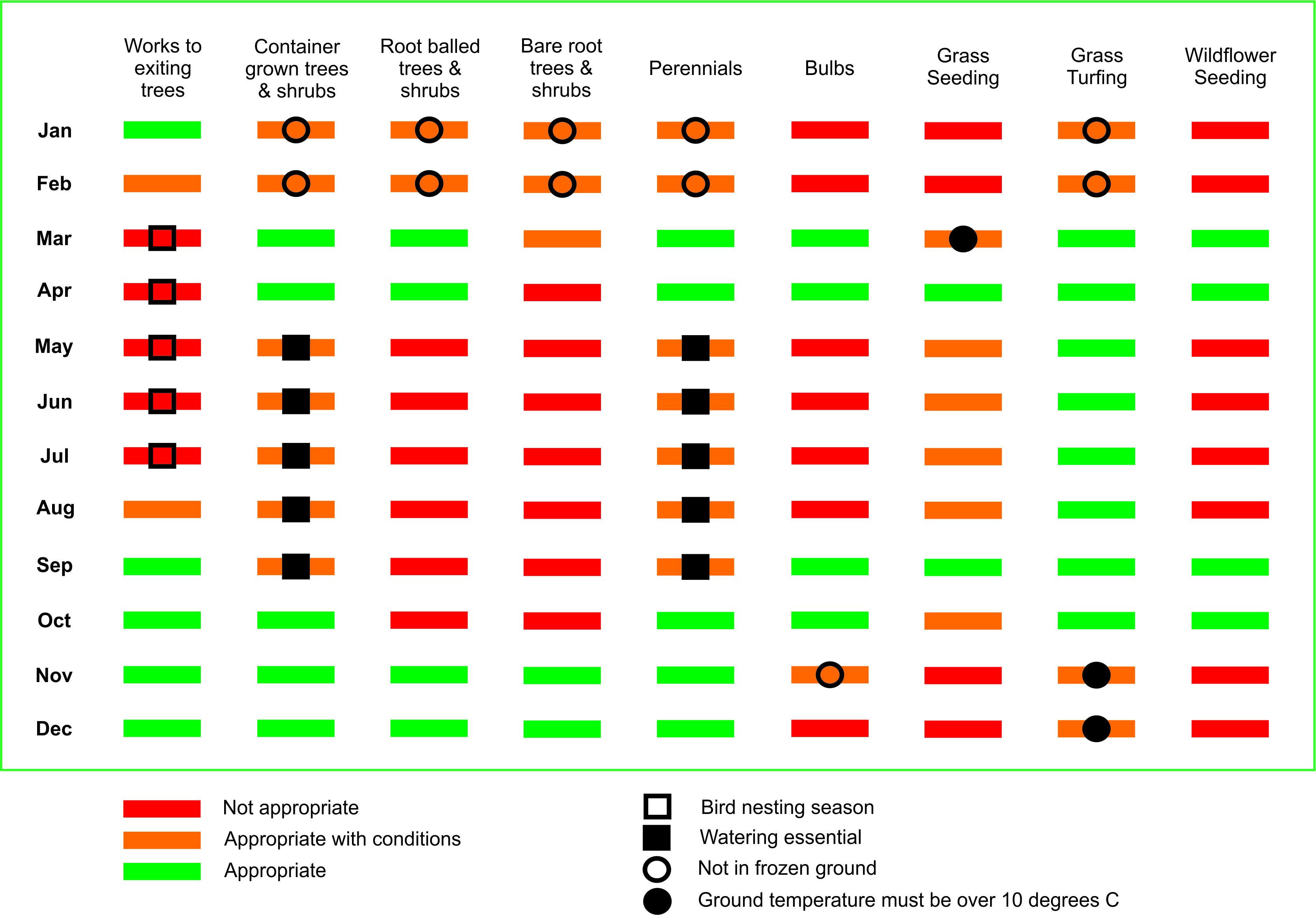Good design usually depends on getting the right relationship between buildings and the spaces that surround them; landscape design can make or break a development scheme. Good landscaping can actively enhance, complement, soften or even obscure development as necessary.
North Norfolk gets its unique identity from it's natural setting and historical development, new development should respect, respond and enhance this unique landscape character. New development should share common characteristics with its locality and reinforce local identity as well as providing well designed, accessible landscapes and public open spaces.
Designers often refer to green and blue infrastructure as key elements of landscape which will influence a development proposal. Green Infrastructure (GI) is a planned and managed network of multifunctional green spaces which can provide a healthy and rich environment. These can include: allotments, gardens, including communal green spaces within housing areas, green corridors, brownfield and greenfield sites, urban parks and gardens, registered commons, village and town greens, children's play space, natural and semi-natural habitat for wildlife, playing fields, cemeteries, pocket parks, country parks, woodland, nature reserves, Sites of Special Scientific Interest and Scheduled Monuments. Blue infrastructure would include waterways and waterbodies, including flooded quarries.
A space within a development is likely to be made up of structural planting, paths, lawns, hardstanding areas, drainage, trees and boundary treatments. These elements will be expensive to change once in place so it is important to get them right from the start. Landscape design should be an overall driving aspiration, considered as a central part of the design strategy.
Trees and vegetation are vital components for liveable, healthy places and provide many health, environmental and economic benefits particularly when considered at an early stage of the design process. Good landscape design should create a living, changing place, and the maintenance of these features can be even more important than that of the buildings. Landscaping should therefore be robust enough to survive and have a proper management strategy in place.
The careful integration of planting and landscape features is vital to the quality of new and existing development but also to the biodiversity value of the environment. Where established hedgerows and mature trees exist, they should be retained to provide amenity and protect habitats. Green features also provide a link to the landscape context and bring a sense of tranquillity.
Where there is a need to supplement existing planting or to start afresh, a choice should be made from native species in order to reinforce the traditional rural landscapes. A keen understanding of contextual issues will help ensure planting is appropriate for the setting and end users. Planting should be designed according to the prevailing site conditions - taking advantage of suitable micro-climates (existing and proposed). The right plant should be specified for particular locations with proper regard to eventual size and height so that it does not block important views such as traffic lights or lights at crossing points.
Key Landscape Considerations
- Landscape should not be treated as a luxury or an afterthought. The role of plants, tress, surfacing, drainage and other elements should be agreed upfront and later expressed through detailed design work.
- Landscaping should take account of time. It can include long-lasting elements such as main routes and major tress, alongside transient elements such as daffodils. Both contribute to placemaking.
- Planting can be achieved quickly and can have a dramatic impact on place and the process of change.
- Dead plants and cracked paths can have a very negative impact. It is vital to ensure the right mix and species and materials are chosen for a particular area.
[insert good Example of a landscaping scheme/plan???]
Trees
The successful integration of trees within a new development can offer a whole host of placemaking opportunities. They can provide links with the wider landscape, create avenues, soften hard surfacing or provide a focal point or wayfinding feature. Getting the planting strategy right will be crucial to their longevity and contribution to amenity.
A tree needs a minimum of 5 cubic metres of arbosoil (or similar) within a rootcell system to avoid compaction (access to air is very important). Linking planting areas together (below ground) through a continuous trench or island of soil reduces required volumes by 20%. Tree pits must be free draining. Long term issues must be considered at the design stage. Tree root barrier systems can be used very effectively for planting near underground services and/or to prevent damage to adjacent hard surfaces.
Careful treatment of existing trees is also required. Not letting the development be restricted by tree cover which is not sustainable for the long term (20-30years) is crucial. Typically 95% of all roots, and virtually all the large structural roots, are in the upper 60cm of the soil, so even minor works around existing trees can be detrimental.
Where development will affect existing trees, a tree survey or arborocultural assessment will be required. In the first instance, all significant landscape features should be retained and integrated into the development process.
Hedgerows
Hedgerows can have many practical uses including marking boundaries, providing buffers to development, containing livestock or screening parking. The shape and species mix has an effect on their texture and colour and these variations add to the character of the landscape. Hedgerows form an important habitat for associated plants and wildlife, not only as a haven but also providing wildlife corridoes for insects, birds and mammals to move from place to place.
In order to inform the right hedgerow mix, consider the local area and the length of hedgerow required. A mix of at least five species is recommended. The best time for planting is late autumn. The following is a list of some native hedgerow species:
- Hawthorn
- Guelder Rose
- Dog Rose
- Holly
- Blackthorn
- Hazel
- Spindle Tree
- Wild Privet
- Field Maple
- Wayfaring Tree
Planting Guidance

